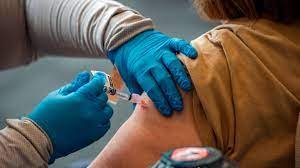Subtotal $0.00
Vaccines have been one of the greatest public health achievements in history, saving millions of lives by preventing deadly diseases. Yet, despite overwhelming scientific evidence of their safety and effectiveness, myths and misconceptions continue to circulate. These misunderstandings create fear, fueling vaccine hesitancy in many parts of the world. To make informed choices, it’s important to separate myths from realities. Let’s explore some of the most common questions: Do vaccines have adverse effects? Are immunizations only intended for children?
Myth 1: Vaccines Have Dangerous Side Effects
Reality: Like any medical treatment, vaccines can have side effects, but in most cases, they are minor and temporary. Common reactions include mild fever, soreness at the injection site, or fatigue. These effects usually disappear within a few days and are signs that the body is building immunity.
Serious side effects, such as severe allergic reactions, are extremely rare—occurring in less than one in a million cases. In fact, the risks of not being vaccinated are far greater. Diseases like measles, polio, or COVID-19 can cause severe illness, long-term complications, or even death. Vaccines are carefully tested in multiple phases of clinical trials before approval and are continuously monitored to ensure safety once they are in use.

In short, while no medical intervention is 100% risk-free, the protective benefits of vaccines overwhelmingly outweigh the minimal risks.
Myth 2: Vaccines Are Only for Children
Reality: Vaccination is important at every stage of life—not just during childhood. While children’s immunizations protect against illnesses like measles, mumps, and diphtheria, adults also need vaccines to stay protected.
For example:
- Flu vaccines are recommended annually for adults, especially the elderly and those with chronic health conditions.
- Tetanus boosters are needed every 10 years to maintain immunity.
- HPV vaccines help protect young adults against certain cancers caused by the human papillomavirus.
- Shingles and pneumonia vaccines are crucial for older adults.
Even if you were vaccinated as a child, some immunity fades over time, and new vaccines may become available. Immunization is a lifelong process that helps protect both individuals and the wider community.
Myth 3: Natural Immunity Is Better Than Vaccine Immunity
Reality: While natural infection can sometimes provide immunity, it comes at a cost—the risk of serious illness or death. For instance, contracting measles might grant immunity afterward, but it can also cause pneumonia, brain damage, or death in severe cases.
Vaccines, on the other hand, provide a safe way to develop immunity without suffering the disease itself. They “train” the immune system to recognize and fight infections, offering protection without exposing the body to the full dangers of illness.
Myth 4: Too Many Vaccines Overwhelm the Immune System
Reality: The human immune system is incredibly strong and capable of handling multiple exposures at once. Every day, we are exposed to countless bacteria, viruses, and environmental triggers. The amount of antigens (substances that trigger an immune response) in vaccines is far less than what the body encounters naturally.
Scientific studies have consistently shown that receiving multiple vaccines, whether at once or over a short period, does not weaken or overwhelm the immune system. Instead, it helps prepare the body to fight diseases more effectively.
Myth 5: Vaccines Are Only About Individual Protection
Reality: Vaccination not only protects the individual but also contributes to herd immunity. This means that when enough people are vaccinated, the spread of disease slows, protecting vulnerable groups such as infants, elderly adults, or those with compromised immune systems who cannot be vaccinated.

This collective protection is vital in preventing outbreaks and, in some cases, has even led to the eradication of diseases—polio and smallpox being prime examples.
Final Thoughts
Vaccines remain one of the safest, most effective tools in modern medicine. While side effects can occur, they are generally mild and temporary compared to the serious risks of disease. And vaccines are not just for children—they play a vital role throughout life, protecting adults and communities alike.
Dispelling myths with accurate information is key to building trust in vaccines. By choosing to vaccinate, you’re not only safeguarding your own health but also contributing to the protection of society as a whole.
In the end, the reality is clear: vaccines save lives.











